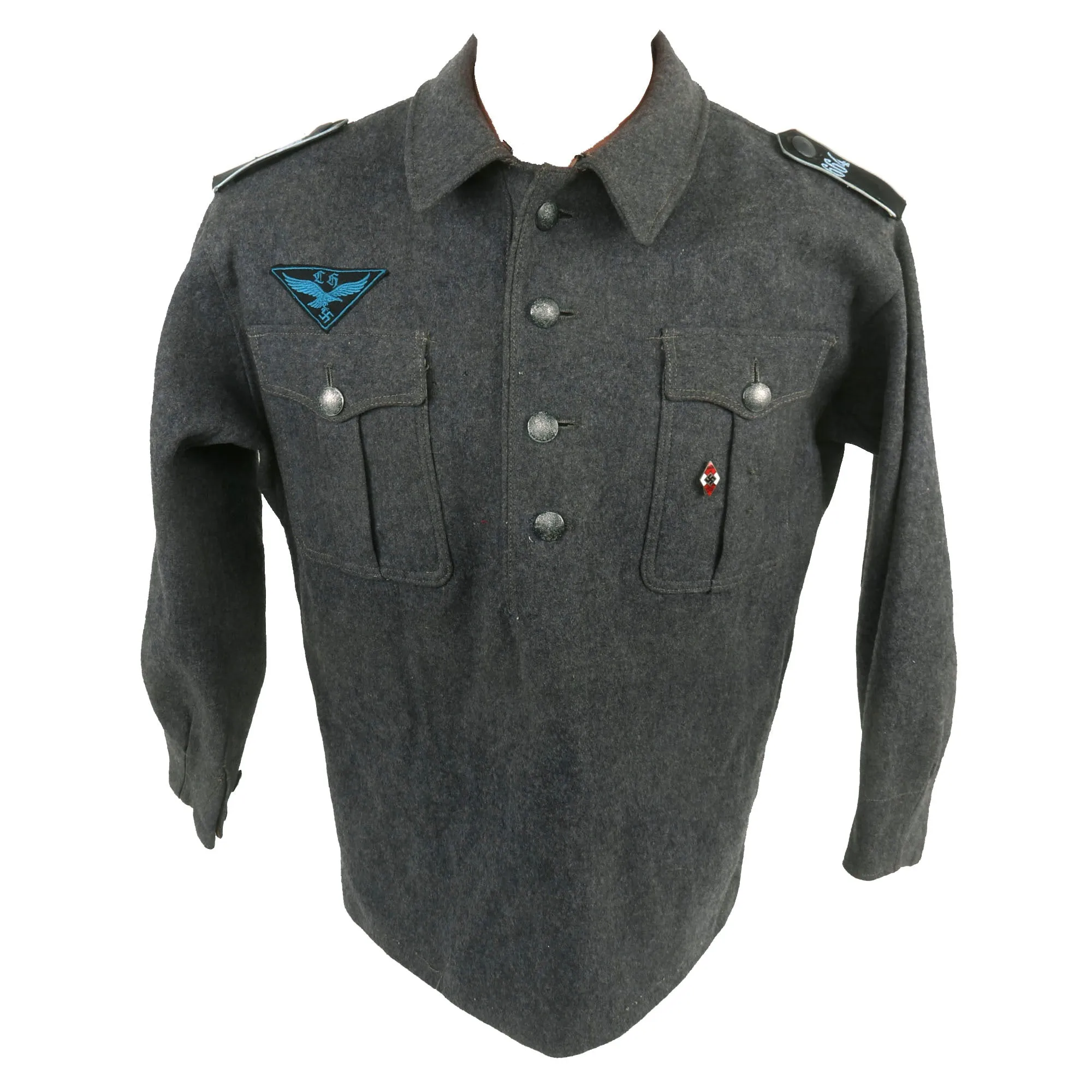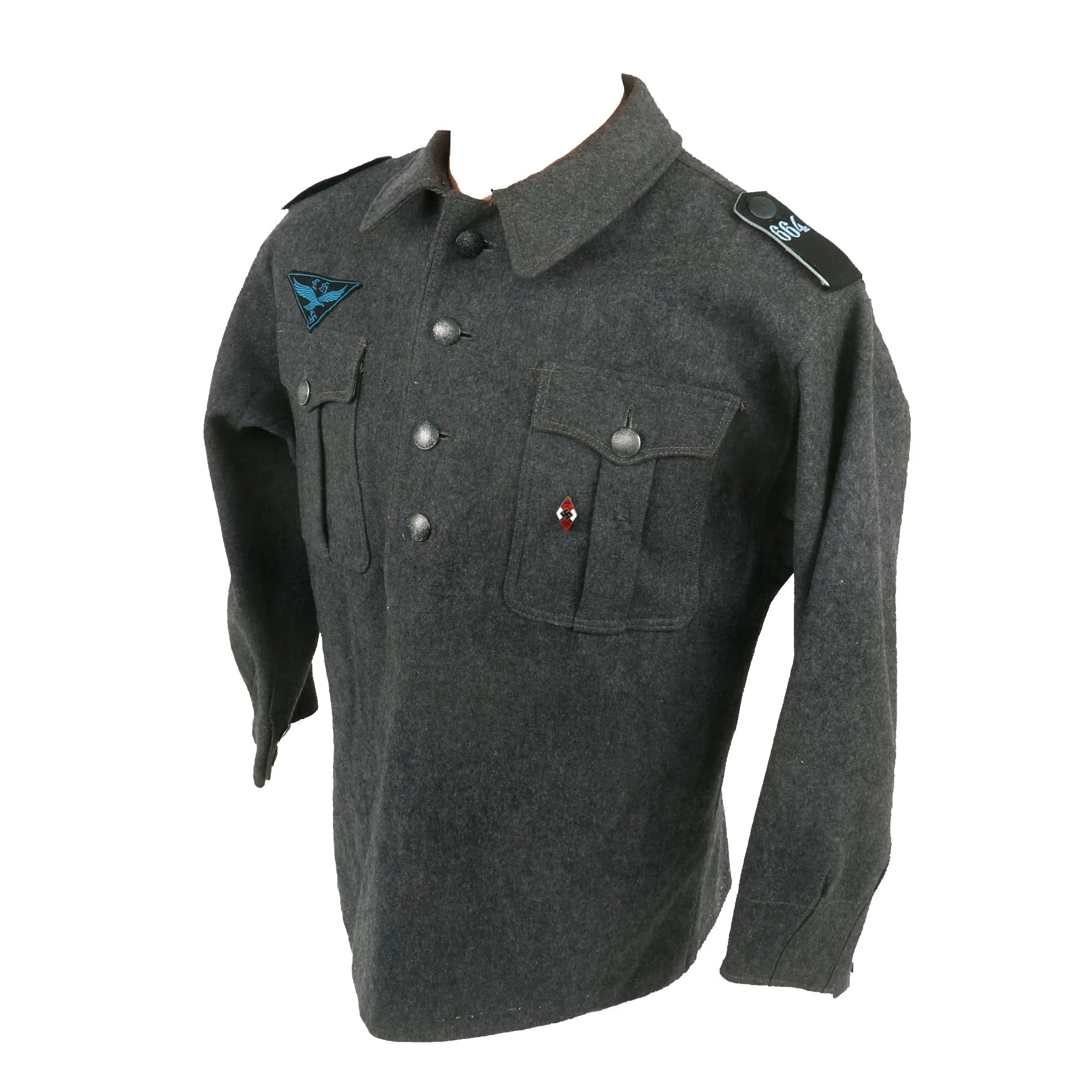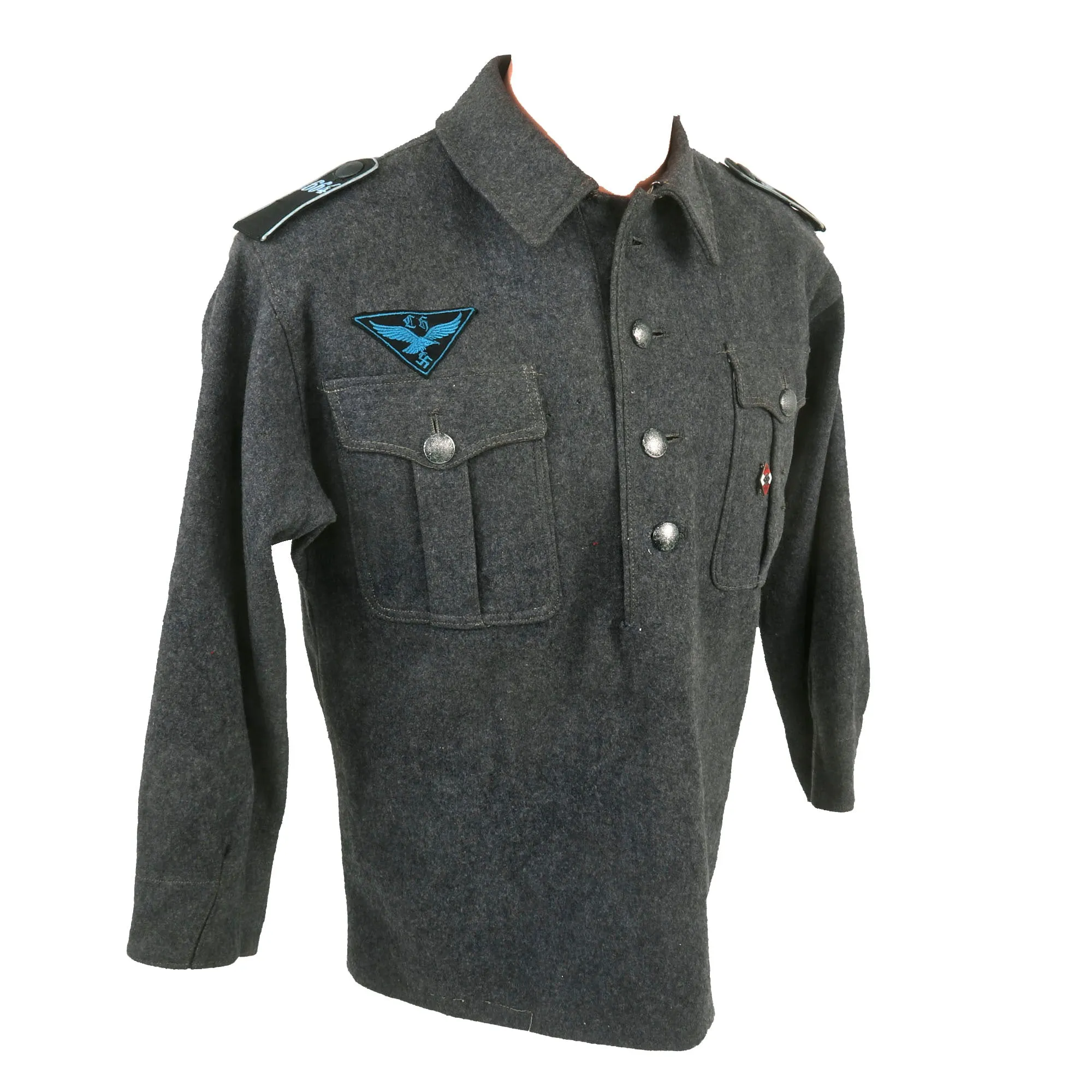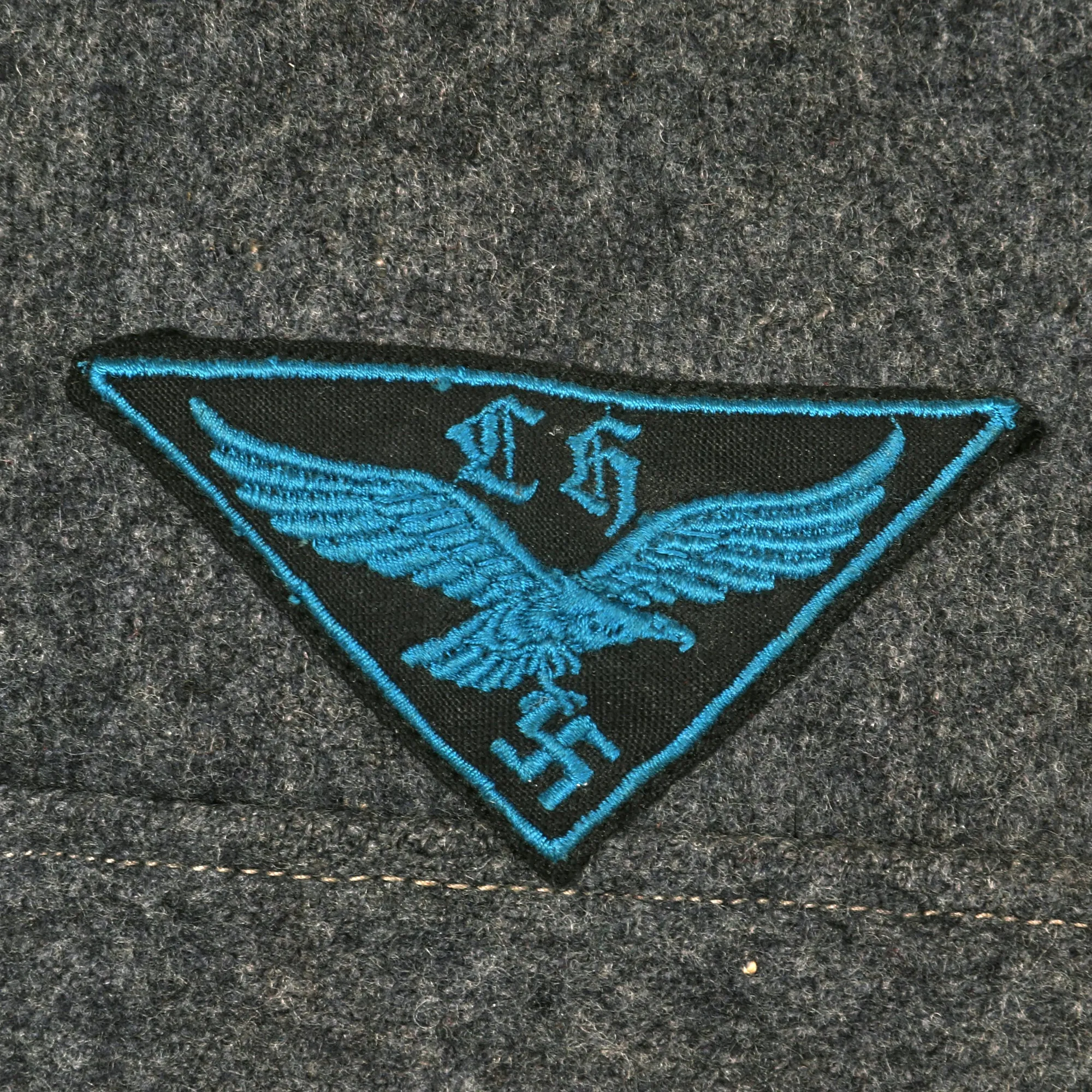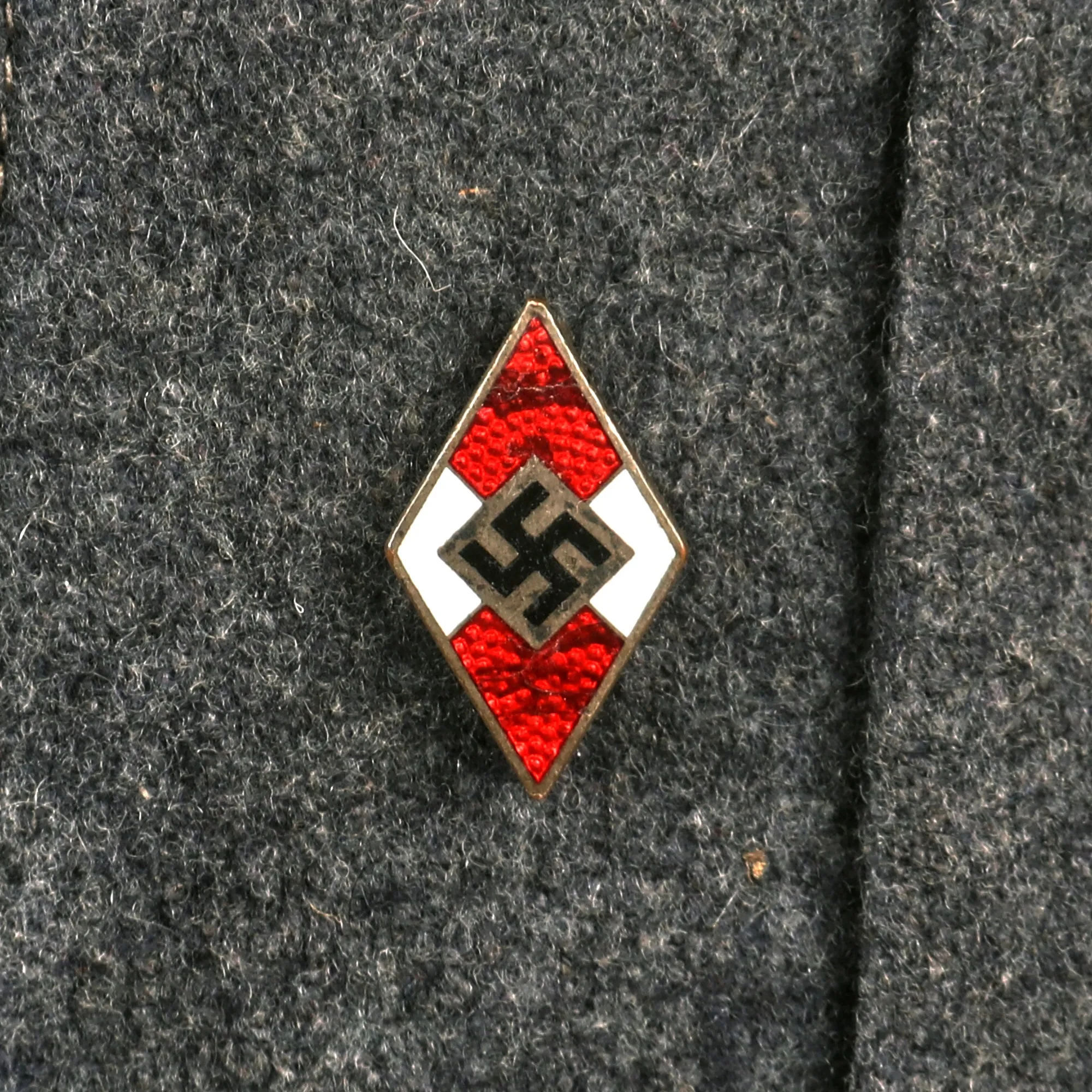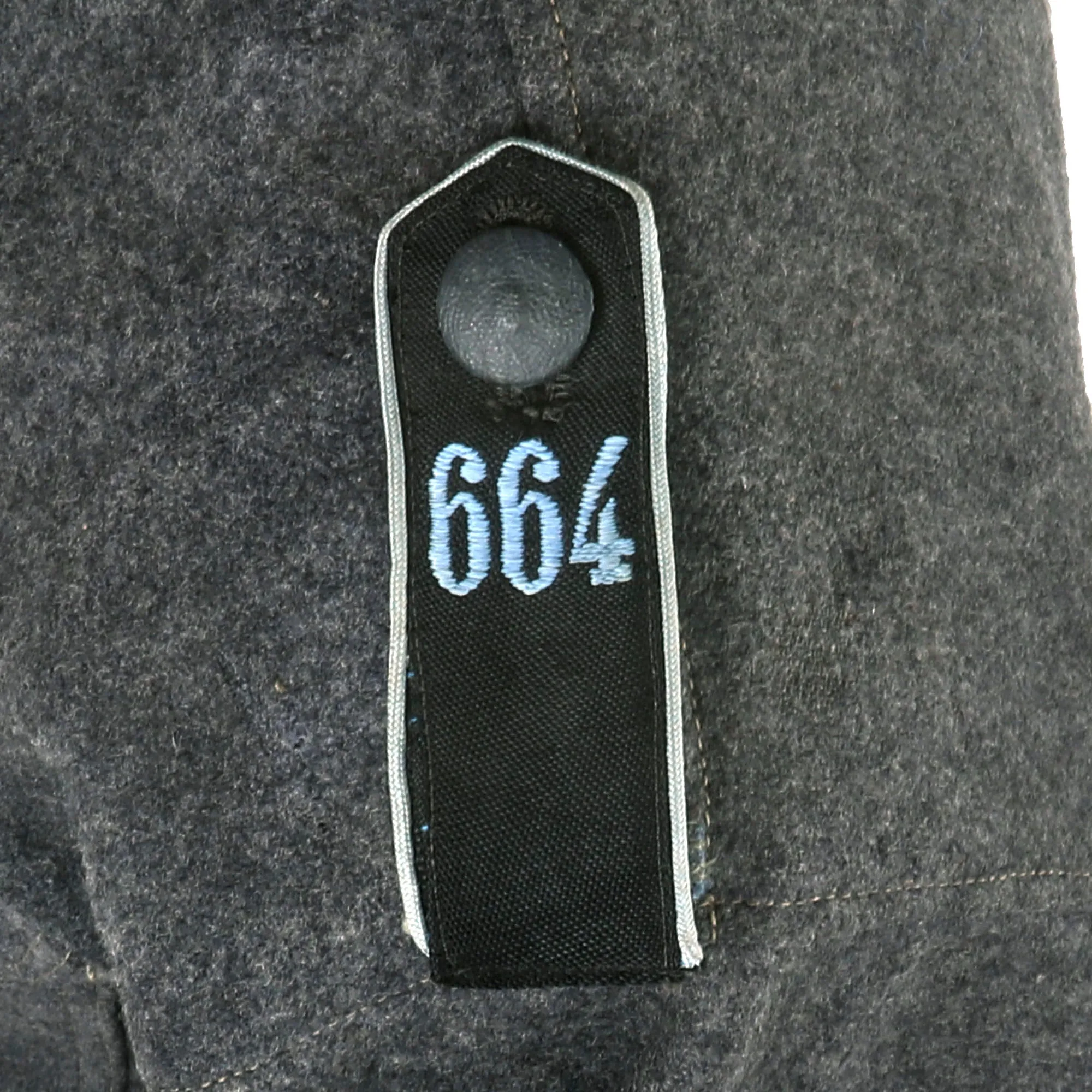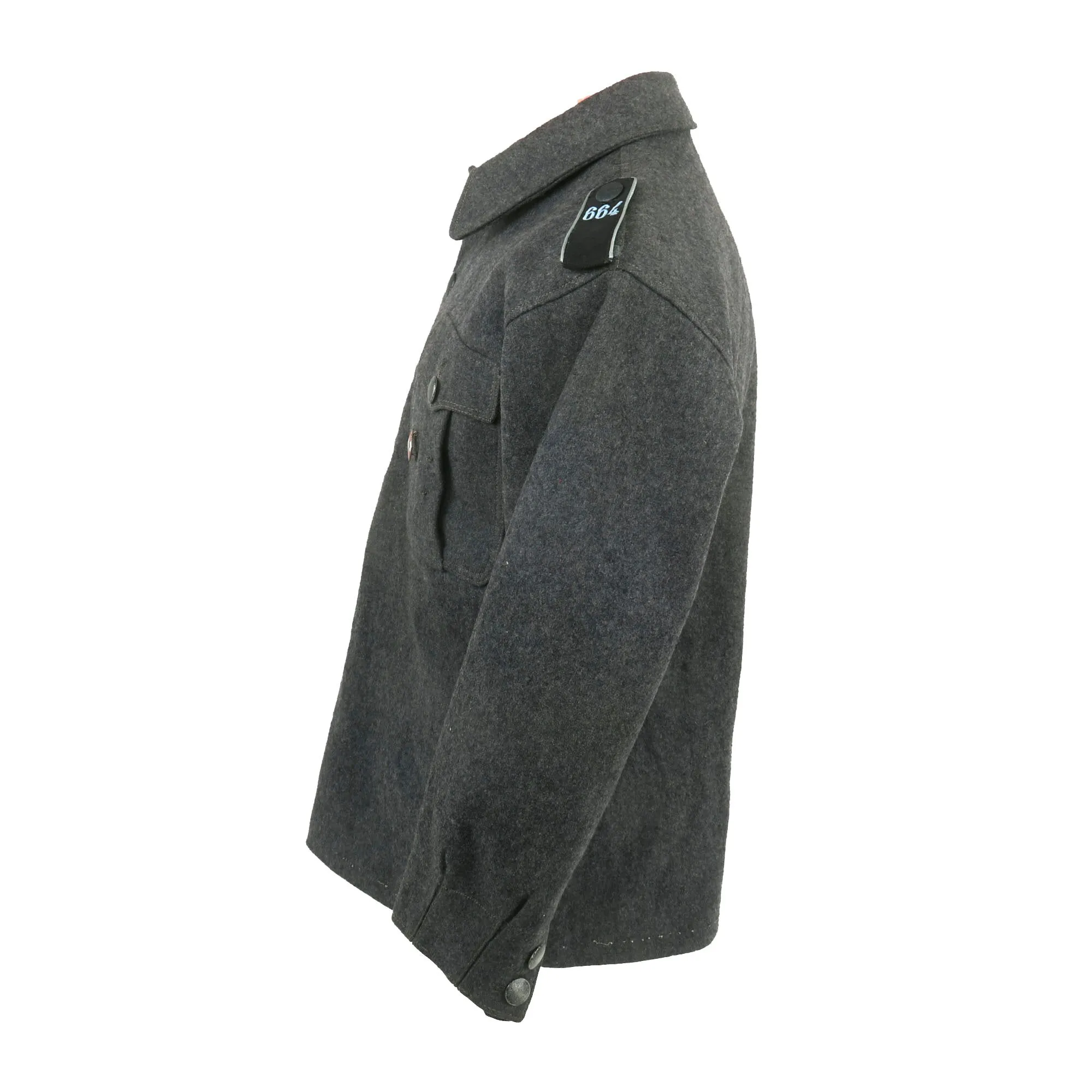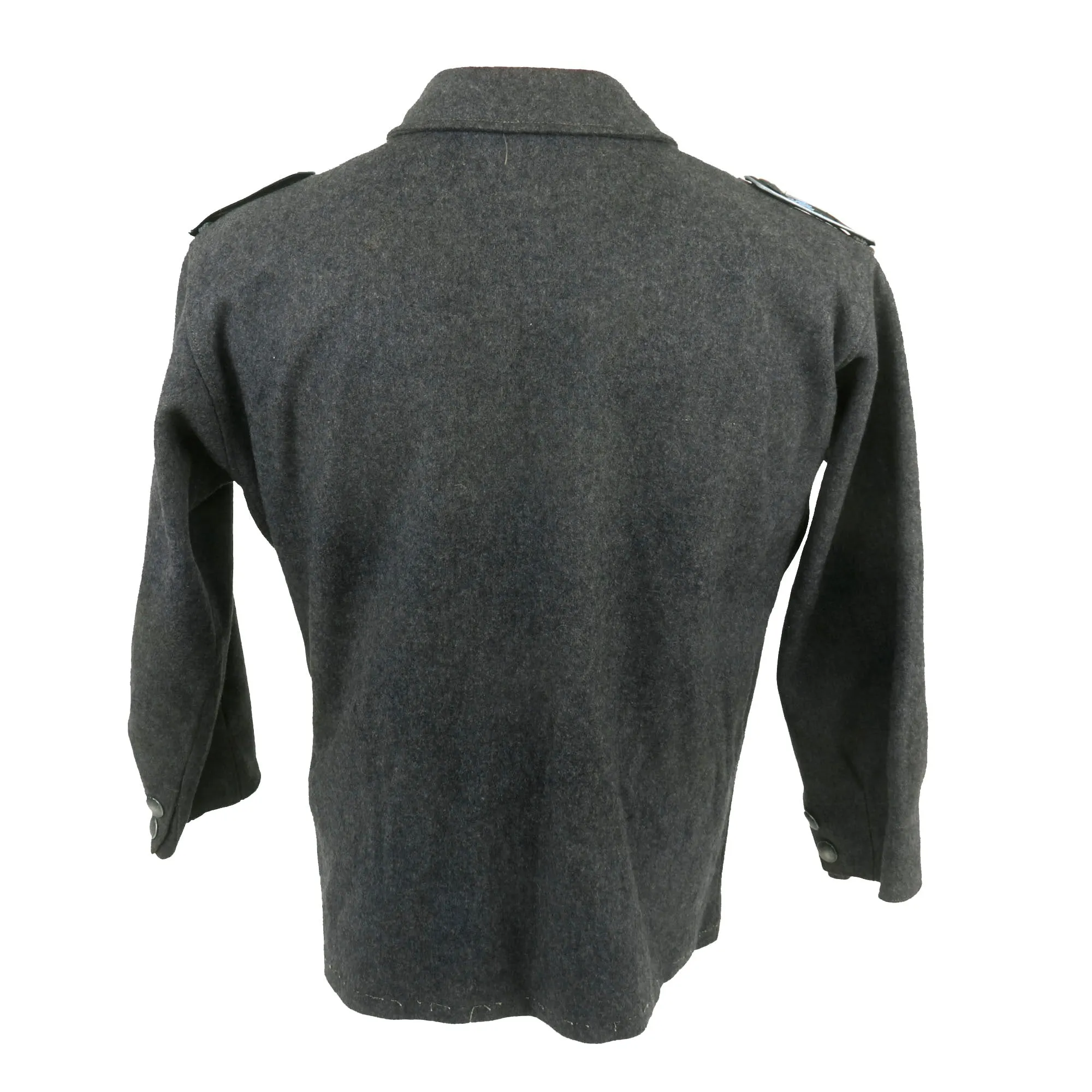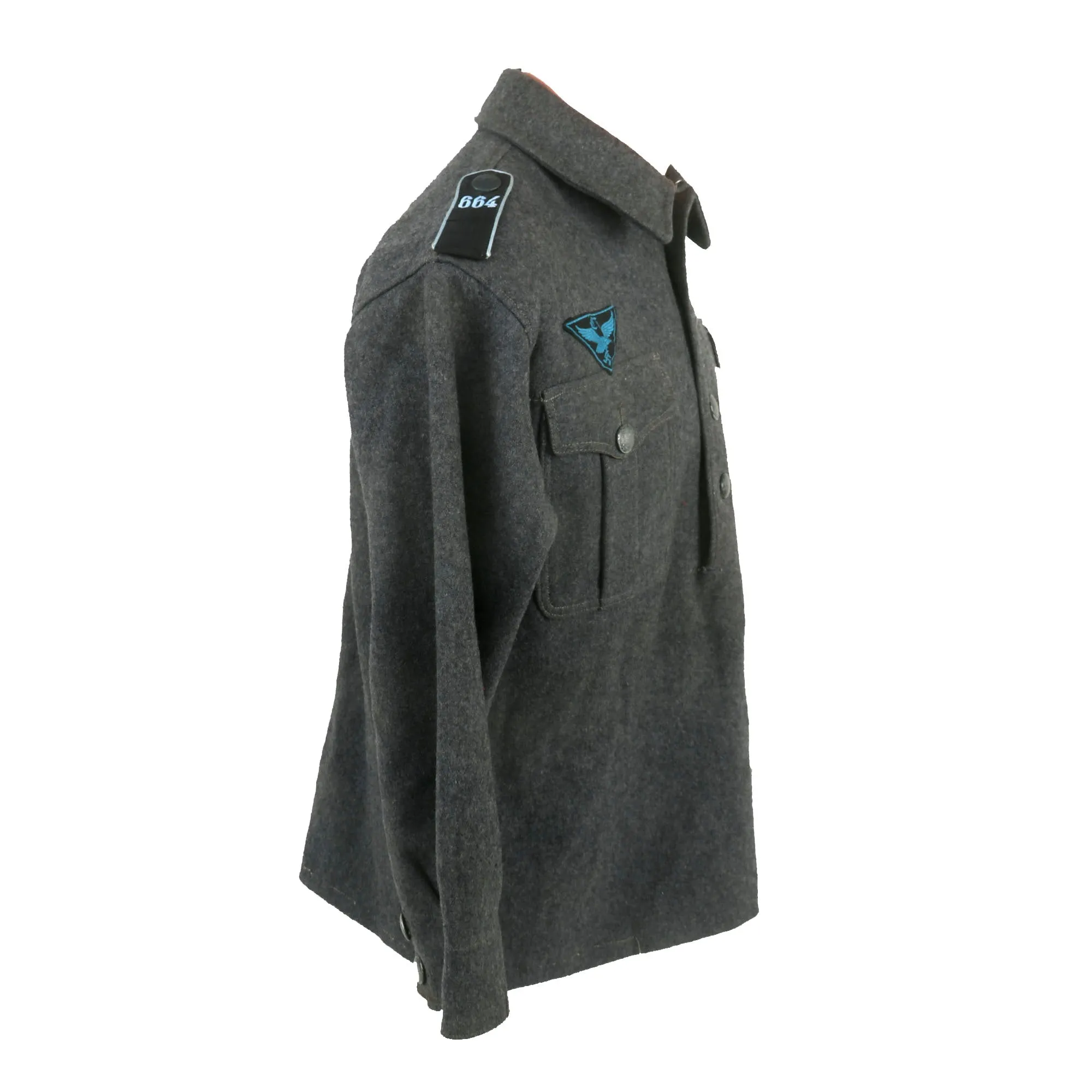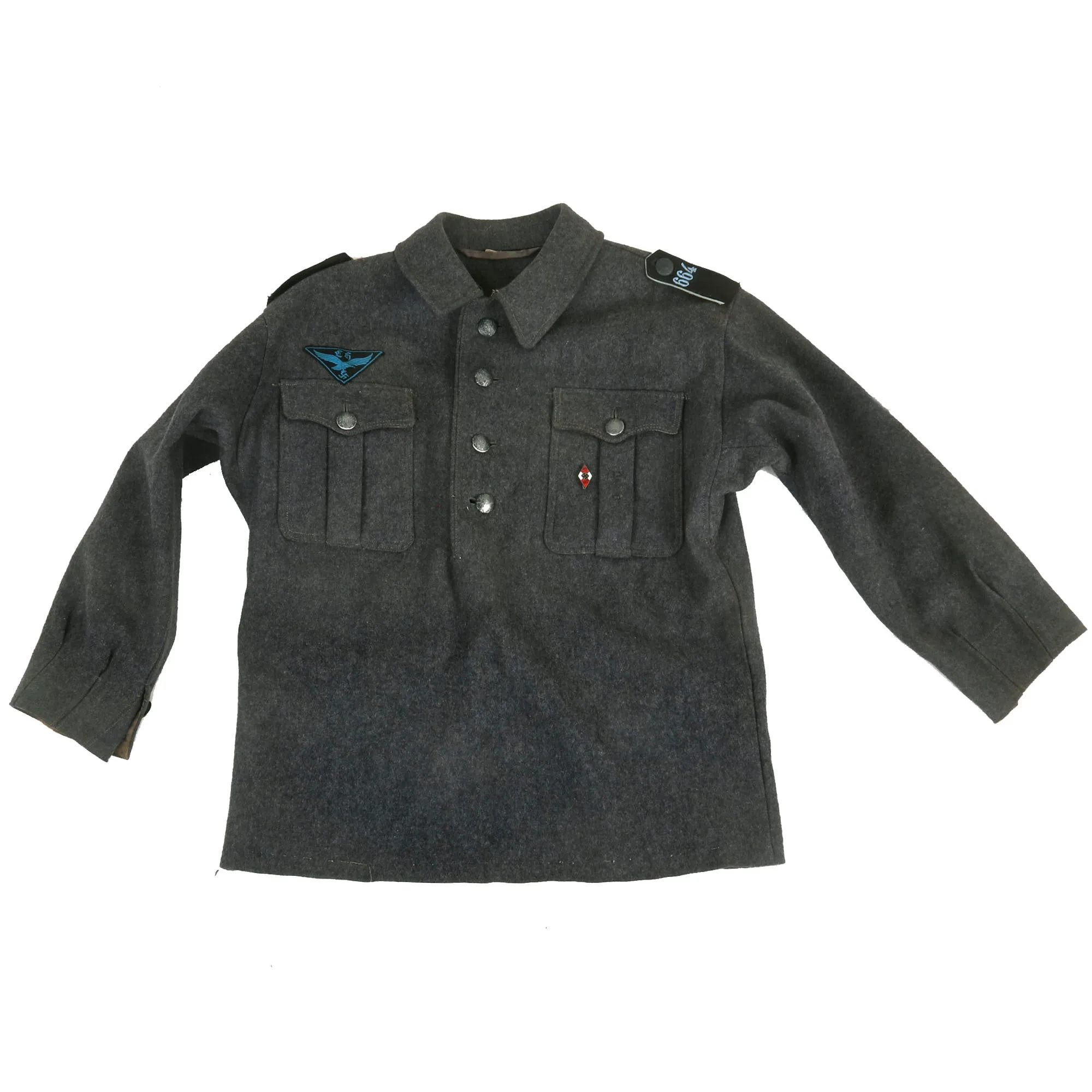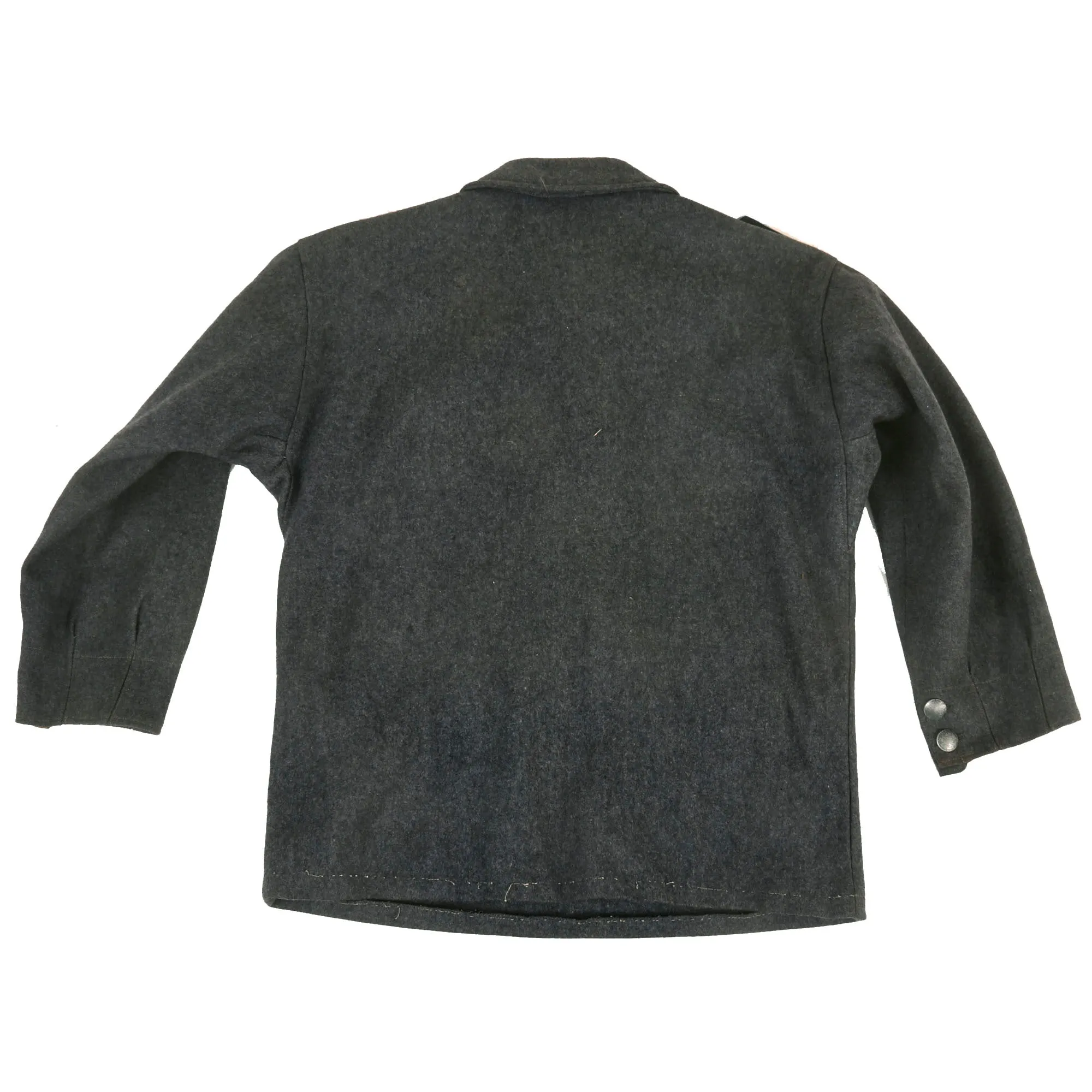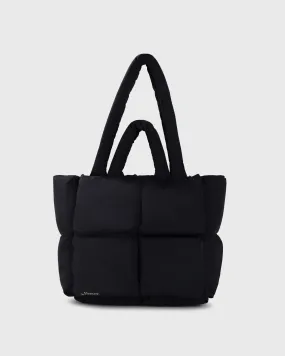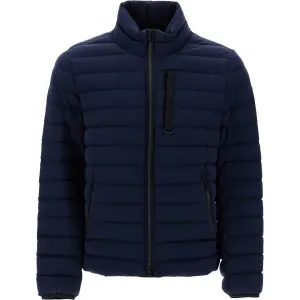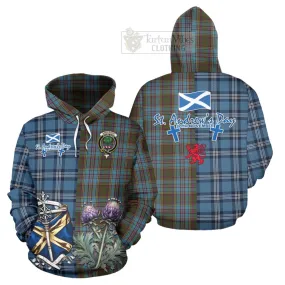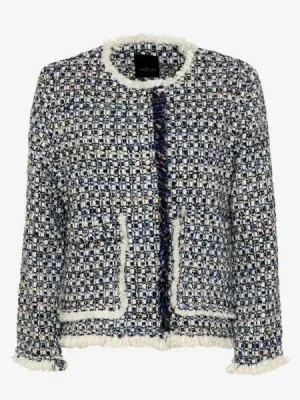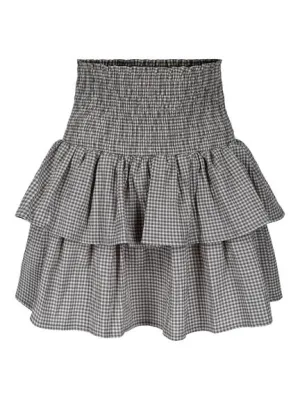Original Item: Only One Available. The organization of the HJ organization had numerous districts, and within these individual regiment style units called Bann were formed, which would often be named after army regiments raised from the area. Within these were smaller company sized units, and the Bann and company would be indicated on the shoulder straps, which also indicated the rank within the organization.
This is a very scarce uniform, the first of its kind we have offered. Initially, the HJ War Auxiliaries in the Luftwaffe, known colloquially as Flak Helpers (Flakhelfer), originally wore the regular HJ uniforms. Only in 1943 they were given their very own type of uniform, which matched those of the Luftwaffe personnel they were helping.
This pull-over jacket shirt is of Luftwaffe fliegerblau (Flyer's blue) blue-gray color wool, and has a four button front cut to the lower chest. It has a lay-down collar and could be worn open or closed. It has wide tightly fitted cuffs and two pleated breast pockets with a buttoned flap. The buttons are pebbled and made of blue-grey metal. There is a size tag under the collar, 44.
The shirt bears correct triangular HJ Flak Helper badge above the right breast pocket, black with a blue embroidered border around a Luftwaffe "Eagle in Flight" insignia. At the top is the LH cypher for a Luftwaffe Helfer. There is also a small enamel HJ membership pin on the left breast pocket, which is in very good condition and maker marked on the back. There is also a thread loop on the pocket, indicating there was another award there, later removed.
The uniform also bears a lovely matched pair of 1938 Pattern HJ schulterklappen (shoulder straps), made form black rayon with Hellblau (Light Blue) piping around the edge, indicating the wearer was a member of the Flieger-HJ (Flyer HJ). The color has faded and stained a bit around the edge so the color looks grey, but careful examination shows that it definitely was originally light blue. With no rank straps or "pips" attached, these indicate the rank of H***erjunge (H***er youth), the lowest rank in the organization, equivalent to a Heer Army Soldat (soldier). Both bear matching unit number 664 embroidered in blue. Research into the HJ Luftwaffe Unit 664 gave us the following information: Flieger-HJ, Bann 664 - Litzmannstadt-Land-Lentschütz, Gebiet 38- O-Wa Wartheland. Definitely some great potential for further research!
The back of one shoulder board bears an RZM tag. The tag has a correct C tax code and features the RZM logo as well as the ink stamped numerical designation of the hersteller (manufacturer) A4 427, supplier number 222081. It also has the HJ logo on the tag.
This is a truly phenomenal uniform with great service-wear & insignia, without any serious condition issues. The buttons are all retained, and it displays very well. Comes ready for further research and display!
In 1922, the Munich-based NSDAP established its official youth organization called Jugendbund der NSDAP. It was announced on 8 March 1922 in the Völkischer Beobachter, and its inaugural meeting took place on 13 May the same year. Another youth group was established in 1922 as the Jungsturm Adolf “AH”. Based in Munich, Bavaria, it served to train and recruit future members of the Sturmabteilung (SA), the main paramilitary wing of the NSDAP Party at that time.
One reason the HJ so easily developed was that regimented organizations, often focused on politics, for young people and particularly adolescent boys were a familiar concept to German society in the Weimar Republic. Numerous youth movements existed across Germany prior to and especially after World War I. They were created for various purposes. Some were religious and others were ideological, but the more prominent ones were formed for political reasons, like the Young Conservatives and the Young Protestants. Once AH came onto the revolutionary scene, the transition from seemingly innocuous youth movements to political entities focused on AH was swift.
Following the abortive Beer Hall Putsch (in November 1923), NSDAP youth groups ostensibly disbanded, but many elements simply went underground, operating clandestinely in small units under assumed names. In April 1924, the Jugendbund der NSDAP was renamed Grossdeutsche Jugendbewegung (Greater German Youth Movement). On 4 July 1926, the Grossdeutsche Jugendbewegung was officially renamed HJ Bund der deutschen Arbeiterjugend (HJ League of German Worker Youth). This event took place a year after the NSDAP Party was reorganised. The architect of the re-organization was Kurt Gruber, a law student from Plauen in Saxony.
After a short power struggle with a rival organization—Gerhard Roßbach's Schilljugend—Gruber prevailed and his "Greater German Youth Movement" became the NSDAP Party's official youth organisation. In July 1926, it was renamed H -Jugend, Bund deutscher Arbeiterjugend ("H” Youth, League of German Worker Youth") and, for the first time, it officially became an integral part of the SA. The name H -Jugend was taken up on the suggestion of Hans Severus Ziegler. By 1930, the Hjugend (HJ) had enlisted over 25,000 boys aged 14 and upward. They also set up a junior branch, the Deutsches Jungvolk (DJ), for boys aged 10 to 14. Girls from 10 to 18 were given their own parallel organization, the League of German Girls (BDM).
In April 1932, Chancellor Heinrich Brüning banned the H Youth movement in an attempt to stop widespread political violence. However, in June, Brüning's successor as Chancellor, Franz von Papen, lifted the ban as a way of appeasing “AH”, the rapidly ascending political star. A further significant expansion drive started in 1933, after Baldur von Schirach was appointed by H as the first Reichsjugendführer (Reich Youth Leader). All youth organizations were brought under Schirach's control.




